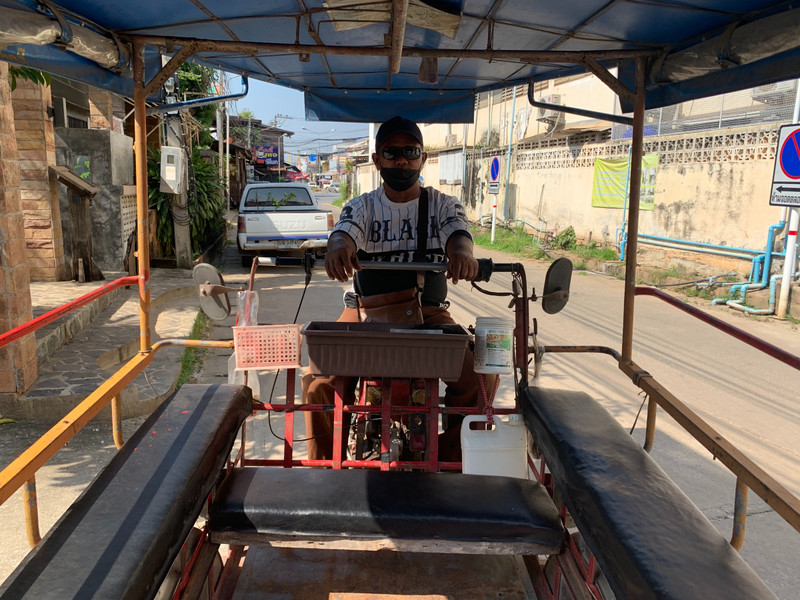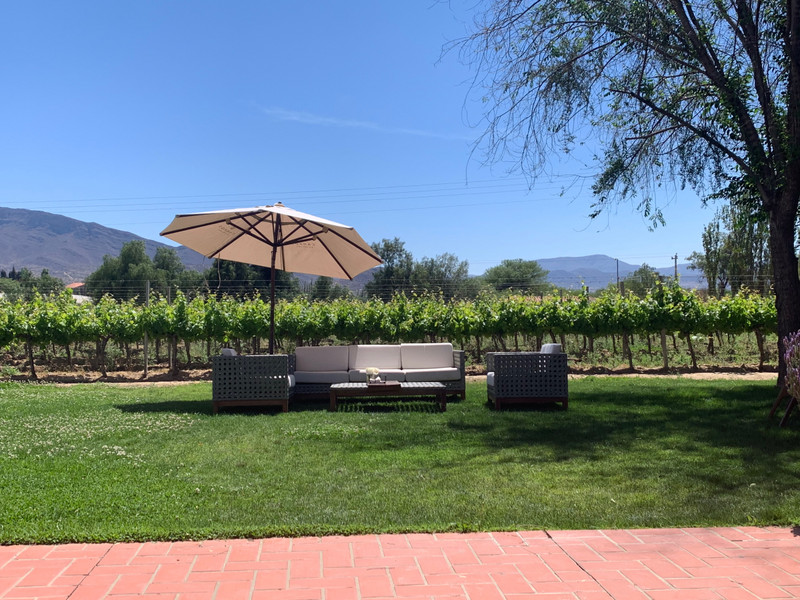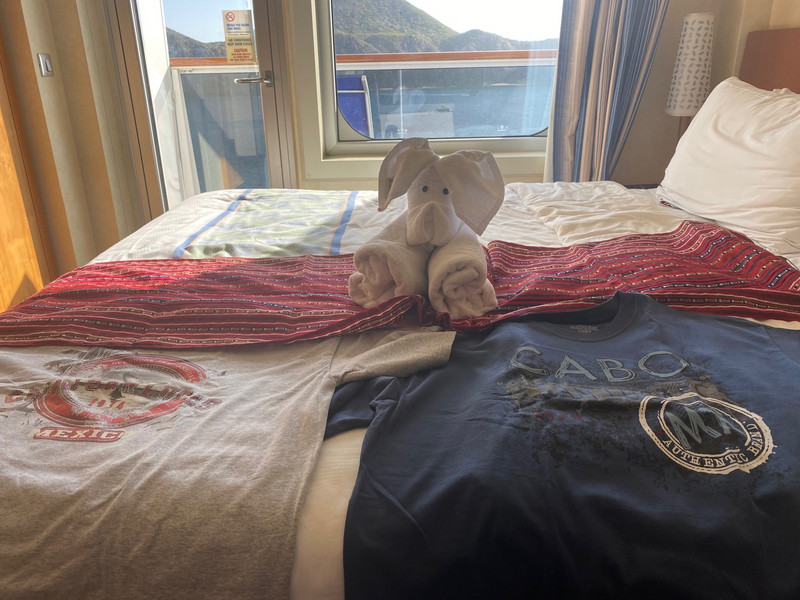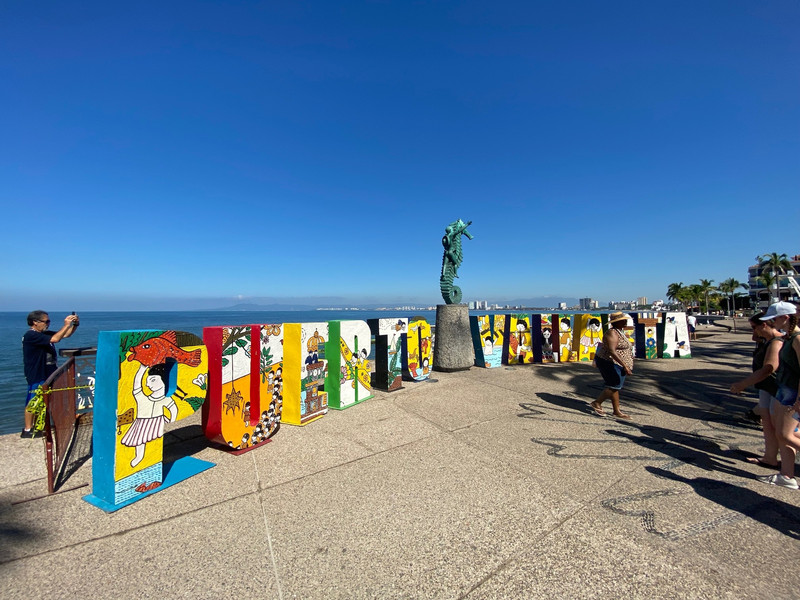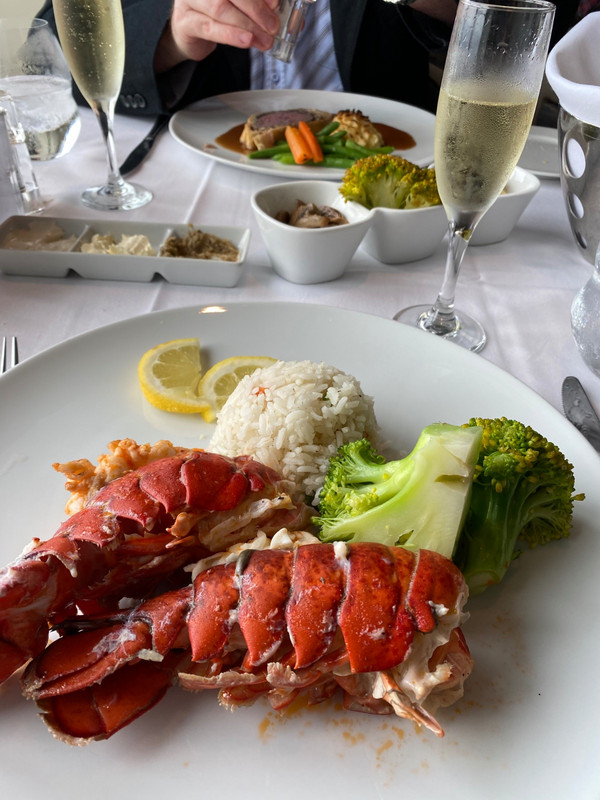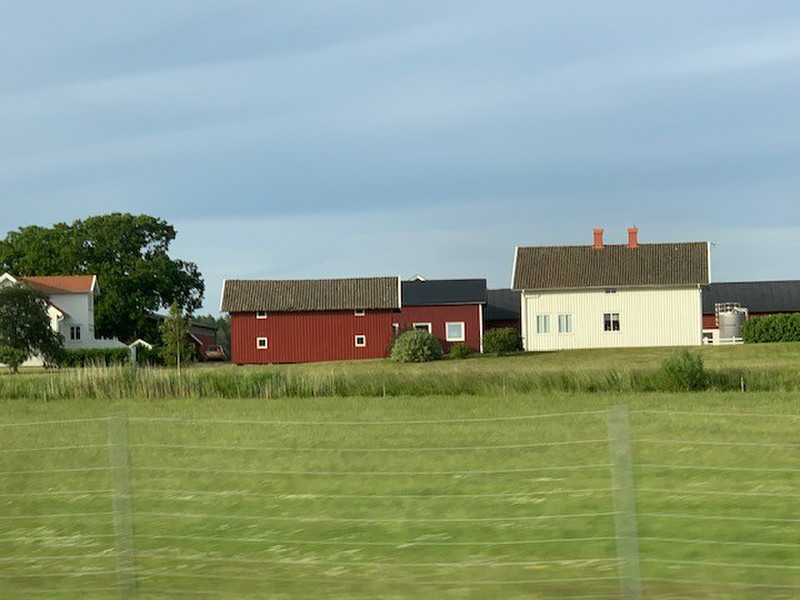I hired Khun Thorh (Khun literally means person and it is prefix in Thailand; Thorh is his given nickname and it is the closest transliteration I can make of his name) to bring me to and from the historical park in this samlor (pedicab powered by a motorbike) on both days. We fell into silence after I exhausted his English vocabulary and he exhausted my Thai.
Thailand was one of the easiest speaking countries to navigate. One could simply step into any of the numerous agencies and book transport and day tours. When planning this trip, I was a little concerned about whether the usual backpacker transport routes were running between Chiang Mai and Sukhothai (as it turns out, they werent), and I was also a little concerned about the risk of being crammed into a minibus. Fortunately, Paul saved the day once again. His wife Renu had gone to her hometown of Kamphaeng Phet to vote, and Paul was planning to drive down, visit her family, and then drive her back. As Sukhothai was a short diversion, he offered to drive me.
Our drive took about 4.5 hours with stops en route for coffee and a random Portuguese egg tart stand at a rest stop. Along the way, we had some great conversations about how our lives and careers have turned out since the time he lived in Honolulu over a decade ago.
Paul dropped me off at my guesthouse around 2pm. After checking in, I went out in search of food and to get myself
oriented to New Sukhothai. Although New Sukhothai is a 20 minute drive from Sukhothai Historical Park, I heeded the advice from the Lonely Planet and other sites to base myself there because of the good budget and wider range of food options.
After a short rest, I ventured out again after sundown to eat at the night market. Thousands of birds were active after sunset, and the noise was deafening. I was surprised to find that only a small handful of the vendors had English signage, as I thought Sukhothai had a critical mass of travelers. Although I speak enough Thai to get by, I never learned to read it, so I am functionally illiterate in this context. I found a stall selling khao man gai chicken rice) and tucked in happily. For me, one of my happy places is to eat on a makeshift table with traffic whizzing past just feet away. I felt as if I was meant to be right here, right now. For dessert, I had sankaya (a sort of custard), and I had a fun exchange in Thai (supplemented with gestures) with the vendor who was very interested in what vaccines
After a hearty breakfast the next morning, I asked the guesthouse owner if the sawngthaew (covered pickup trucks with two (sawng) benches (thaew)) that regularly plied between New Sukhothai and the park for 30 baht were running. He said they werent. It certainly wasnt business as usual. He advised me to flag down a samlor (a pedicab powered by a motorcycle), and that the going rate was 150 baht. I certainly am having to pay more because it isnt business as usual. But, I am sympathetic to all the people in the informal economy whose livelihoods were upended when the tourists stopped coming.
Sukhothai Historical Park is roughly divided into three zones - the main park itself, a northern zone, and a western zone. My samlor driver Khun Thorh (this is the closest transliteration of his nickname that I can think of; the intonation is similar to the second tone in Mandarin) dropped me off at a bicycle rental place and told me to call him if I needed a return
ride. I then hoisted myself onto my rickety rental bike and ventured into the main part of the park. The bike rental cost 30 baht (US$1)!
My first stop was the Wat Mahathat, which was a huge and spectacular ruin. The highlight of this ruin was two large standing Buddha statues. One statue had one hand raised, and the other did not. I was mildly amused by the cliched sight of two westerners meditating in front of one of the statues while listening to a recording of a Buddhist chant.
